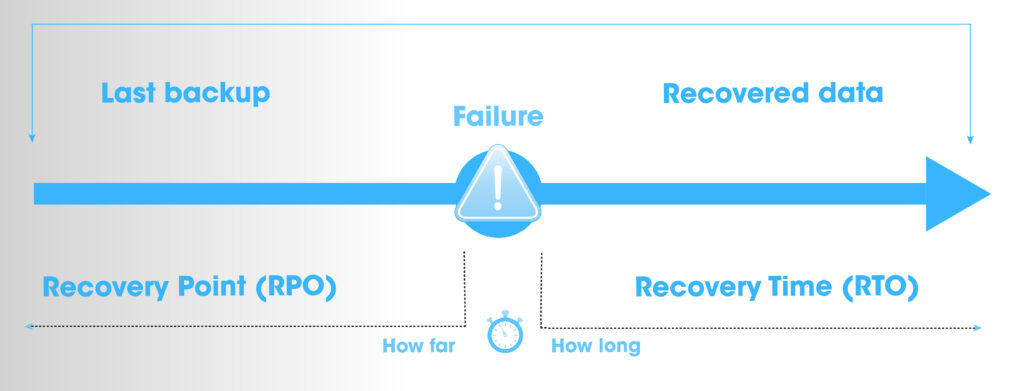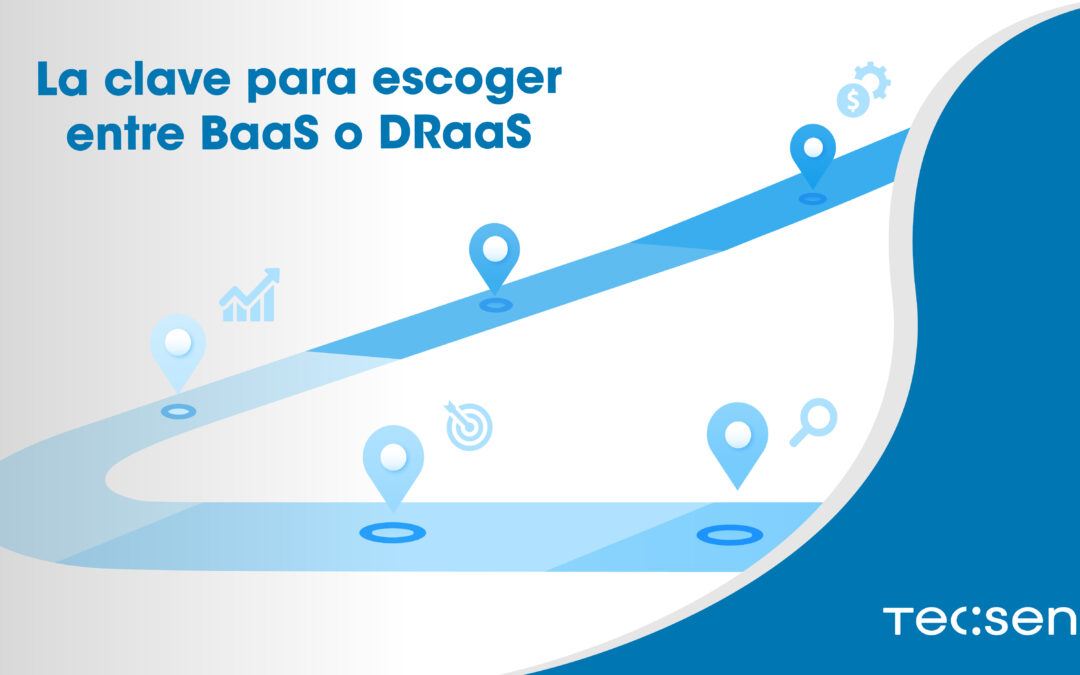The theory is clear: disasters exist, they are not predictable, they are not an option and they are not 100% avoidable for companies. But what is in our hands is to be prepared with BaaS or DRaaS continuity plans and thus minimize the impact of these. In previous posts we saw the main differences between them and the importance of knowing how to measure the speed and efficiency of recovery. The latter is the key to choosing between BaaS or DRaaS,the fundamental parameters that define a recovery plan known as RTO and RPO.
RTO and RPO:
To make a decision between implementing a BaaS or a DRaaS it is very important to parameterize the LEVELS of criticality DRP (Disaster Plan), where the RPO (Recovery Point Objective) and RTO (Recovery Time Objective) are analyzed.
- RPO (Recovery Point Objective) refers to the maximum volume of lost data measured in time from the occurrence of a failure to the recovery of the last available backup. This term is directly related to the limitation of setback distance over time. i.e. the amount of data that can be “lost” before it affects business operations, e.g. loss of data from
- RTO (Recovery Time Objective) represents the time it takes to perform recovery from the time an incident occurs until operations are available to users again. This term relates to the downtime suffered in the event of a disaster. That is, the time it should take to recover the activity of applications and systems.
Criticality to a disaster is measured by periods of time from the last backup until business is restored or recovered. RPOs and RTOs therefore have similar objectives but are aimed at different ends.

What does your company need?
BaaS and DRaaS are independent services that vary according to the characteristics of each company, but as we have seen above they can operate together.
Examples of BaaS and DRaaS applications:
Company B has several servers for different functions:
- Servers hosting customer databases and their ERP, where the ideal solution is a DRaaS (Disaster Recovery) plan as they cannot afford to be without access to such sensitive information.
- Servers that host all the documentation (contracts, images, files, etc.), in this case the solution is to make a daily backup (BaaS) and thus avoid the possible loss of information in case of disaster.




